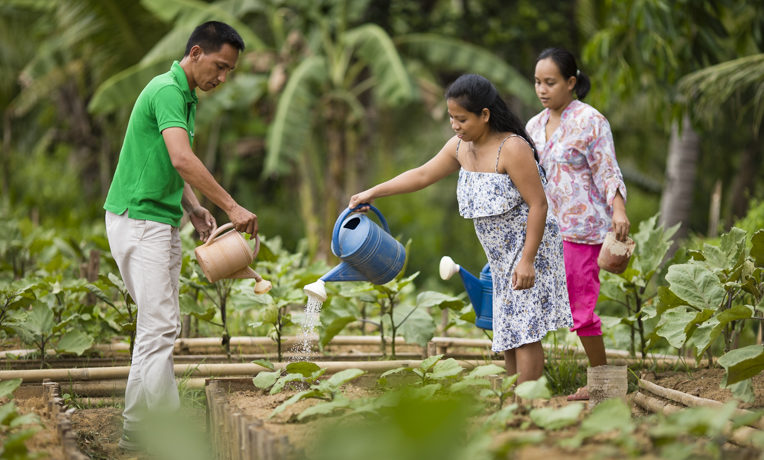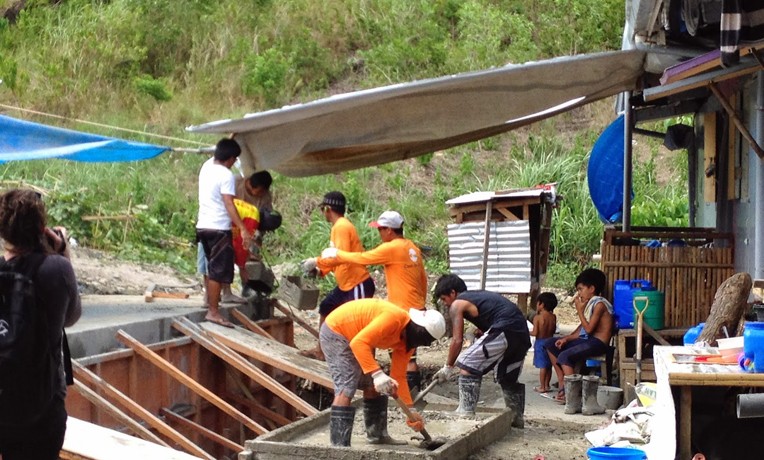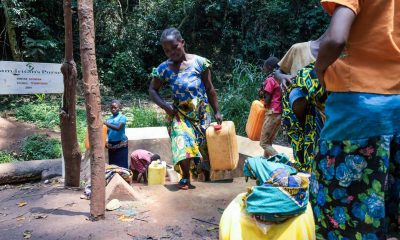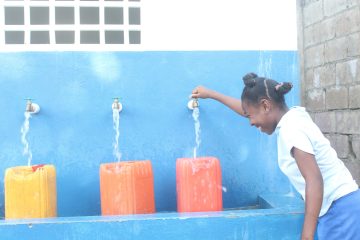Two projects in Tacloban provide clean water and hygiene for people affected by flooding
Katelyn Holmberg is an intern with Samaritan’s Purse in the Philippines.
During my internship, I’ve had the privilege to be part of two great projects here in Tacloban. The first was fixing a broken septic tank at one of our bunkhouses. Wastewater leaked from cracks in the wall, seeped through the soil, broke the surface, and flowed downhill beneath the bunkhouses.
It was a health risk, and we had to fix it. We encased the entire tank with a 20-centimeter thick wall to prevent any additional leaks. However, we still had to find a way to treat the water exiting from the tank.
That’s when a local university recommended a great option. They advised us to use filters along with chemical dosing to treat the water. It was great how our technical team built an amazing filtration system from old 55-gallon drums, a little PVC, and a whole lot of ingenuity.

Here is the basic arrangement of the filter system. It uses six 55-gallon drums. The water flows out of the tank, into the filters for additional treatment, and then travels out into the storm water ditch.


Here is our technical team at work. These guys are great and work hard to provide safe water for communities here in Tacloban.
Our second big project was installing a community water system and building a latrine system for a new transitional shelter site. We prepared two wells, a pump house, and a tank stand for our water system. In addition, we placed the distribution piping to transport water to tap stands throughout the site so beneficiaries can easily access the clean water.

This is where the water begins. The pump draws water up from the well and pushes it through the piping on site to the storage tanks shown below.
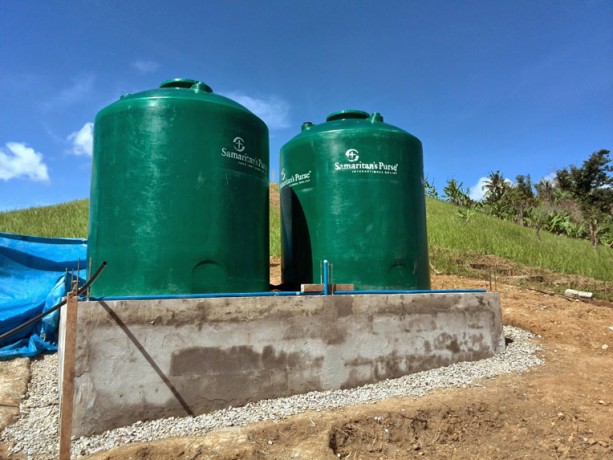
Each tank stores 5,000 liters for a collective storage capacity of 10,000 liters. We also installed a chlorination unit with the tanks so the water is purified before entering the tanks. Once done, it’s ready for use.
The water flows from the tanks to a tap stand. There are three on site to serve the beneficiaries with clean water. Tap stands usually have about six taps for use and are placed on a platform.
We’re also working on latrines for this project. Each comfort room (as they are called here) has three toilets. Two stalls are just toilets, while the last one is a shower/toilet combination. We’re building 12 comfort room blocks for the 120 homes.


This is another view of the site. Here, only the basic frames of the houses have been built. Now the site is completely finished and covered in houses like this.


Our team of carpenters built the superstructure of the comfort room by securing the large, structural members on the foundation. They also prefabricated the walls for rapid installation purposes. Below is the framing for the superstructure and the prefabricated walls.


Lastly, the carpenters added the wall coverings and the plumbers installed the toilets. The comfort room is basically complete. Just a few finishing touches and it’s ready for use.

